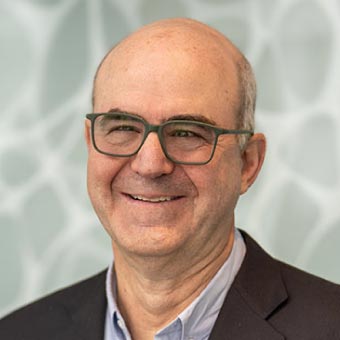Today we celebrate a game-changing tool in research and medicine. Ten years ago, one of Intellia’s founders, Dr. Jennifer Doudna, and her collaborator, Dr. Emmanuelle Charpentier, published a paper in Science, detailing the power of CRISPRAdapted from a naturally occurring bacterial immune system, CRISPR is an acronym for Clustered Regularly Interspaced Short Palindromic Repeats. One of the proteins in the CRISPR system is known as CRISPR-associated 9 protein or Cas9 protein, which acts as a pair of ‘molecular scissors’ to cleave DNA. Researchers have co-opted the bacterial CRISPR system to make specific changes in the DNA of humans, other animals and plants. CRISPR was first harnessed in 2012 as a genome editing tool in the lab. More recently, scientists have begun engineering and testing CRISPR systems to be very specific to a desired genetic target./Cas9 to edit strands of DNAAcronym for deoxyribonucleic acid, the hereditary material in humans and almost all other organisms. DNA can be found in the cell nucleus and contains the genetic instructions for the development, functioning, growth and reproduction of all known organisms. Nearly every cell in a person’s body has the same DNA. at precise locations. Since then, this Nobel-prize-winning technology has advanced exponentially — from scientific observation to numerous clinical drug candidates in development for people living with serious diseases.
At Intellia, we recognized the therapeutic promise of this tool, and today, we celebrate our own anniversary. On June 28, 2021, we shared the first-ever data suggesting that we can use the CRISPR technology to precisely edit the genome in people to treat disease with a single intravenous infusion.
The initial results of our Phase 1 clinical trial of NTLA-2001 for the treatment of ATTR amyloidosis were not surprising to me. I had great confidence in the science and in our preclinical model results. The buzz of excitement was palpable from our Intellia headquarters in Cambridge, Massachusetts, all the way to the United Kingdom and New Zealand, where our lead investigators, Drs. Julian Gillmore and Edward Gane shared in our optimism, recognizing the remarkable promise of genome editing.
Looking Back on Targeted Therapies
As a trained oncologist when I started treating patients with cancer 35 years ago, many of the drugs we gave also had toxic effects and were difficult for patients to tolerate. At that time, targeted therapies were just beginning to emerge. Later, as a cancer researcher, I was involved with the development of one of the first targeted drugs, Afinitor® (everolimus), used to treat a variety of cancer types., While this therapy proved helpful for many patients, it did not cure patients from their cancer.
As a physician, when you prescribe a treatment, you want to be confident it will benefit all appropriate patients and that its beneficial effects will be long-lasting. I’m hoping with genome editing we can someday reach that goal.
My next project, Kymriah® (tisagenlecleucel), also known as a chimeric antigen receptor (CAR) T cell therapy, was the first approved cell/CAR-T therapy to equip a person’s own cells to fight cancer. While this therapy proved to be an incredible advance for many patients, in some, it simply didn’t work as well — or for as long — as we would like.
As a physician, when you prescribe a treatment, you want to be confident it will benefit all appropriate patients and that its beneficial effects will be long-lasting. I’m hoping with genome editing we can someday reach that goal.
Looking Forward to New Possibilities
In the decade since CRISPR’s discovery, the unimaginable outcomes of genome editing are just beginning to be realized. In the two years since I arrived at Intellia, we have moved at a swift clip from a promising technology to multiple investigational products. We look at each disease for which we’re trying to make a big impact, and think, how can we go beyond what’s currently being done? And how can we make a bigger difference?
As Intellia’s first wave of programs progresses through clinical studies, we are further expanding our “CRISPR toolbox,” bringing data forward and breaking new ground.
Above all, we are committed to developing both in vivo and ex vivo therapies for genetic diseases, cancers, and autoimmune conditions, prioritizing patient safety. With each clinical proof of concept, we are opening the doors to a wide variety of medical applications and are closer to being able to make permanent, lifelong changes in people’s lives.


